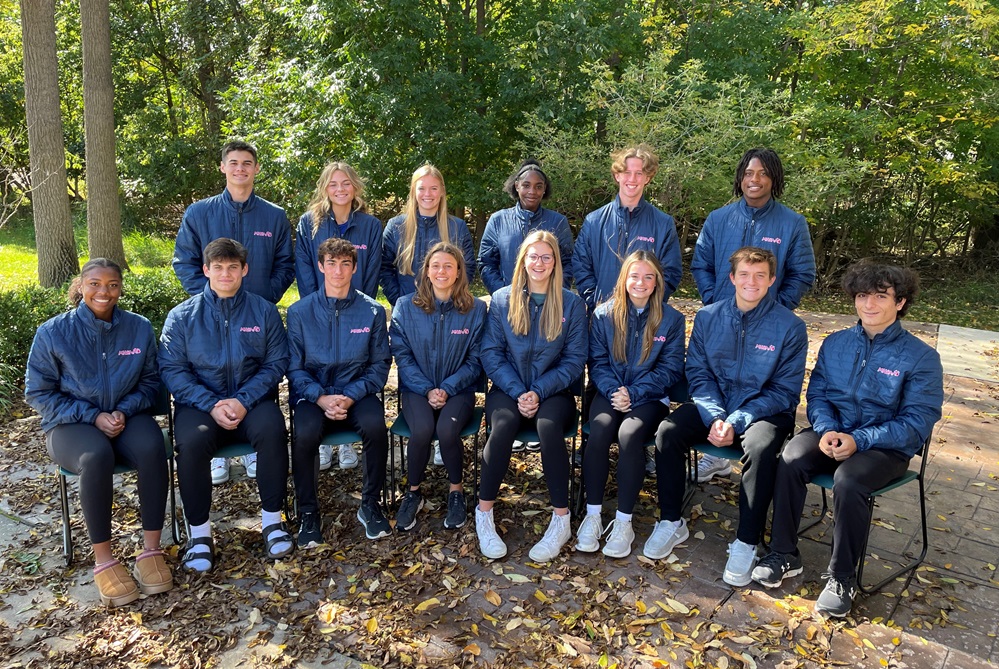
Girls Events Set Attendance Record
September 17, 2015
By Geoff Kimmerly
Second Half editor
Michigan High School Athletic Association girls postseason events enjoyed record attendance for the second straight school year in 2014-15 as nearly 1.4 million fans total took in tournament events for which attendance is recorded.
Total attendance for 2014-15 was 1,389,209 fans, with 926,099 at boys tournaments and 463,110 spectators at girls events. Attendance is kept for all sports except golf, skiing and tennis, for which admission typically is not charged.
That total was down 31,518 fans, or 2.2 percent, from 2013-14. But that decrease was due mostly to a 20 percent drop in football attendance stemming from an uncharacteristically cold and snowy weekend for Pre-District games, and despite a slight uptick in MHSAA Finals attendance (53,494) in the sport for the second straight season to its highest total since 2011.
Attendance for Pre-District football games was down 45,663 fans (33 percent) from the same round of the 2013 Playoffs – although that one-weekend deficit was made up partially by an increase of 28,550 fans (6.6 percent) at girls events over the previous school year.
Two girls sports – competitive cheer and volleyball – plus the combined girls and boys bowling tournament set attendance records during 2014-15. Volleyball set a an overall attendance record for the second straight season, with 110,931 fans, and also set records at the MHSAA District and Regional levels. Cheer set records at the District and Finals levels and overall with 31,284 fans for the tournament – an increase of 20 percent over the 2013-14 season. Bowling set an overall attendance record for the fourth straight season, this time with 13,298 fans.
A number of other sports continued promising trends. The Baseball and Softball Finals, which showed a 29-percent increase from the previous year after moving to Michigan State University in 2014, experienced another boost this spring. The Girls Soccer Finals also moved to MSU, which attracted more fans total to the site that weekend; however, the combined attendance for Baseball, Softball and Girls Soccer Finals (16,310 fans) this spring was 29 percent higher than the 2014 combined total when girls soccer championship games were played at two other sites.
Baseball and Softball Regionals experienced their highest turnouts since the 1995 season, with baseball setting a record for that round with 12,297 fans. Girls Soccer Regionals also set a record with 11,228 in attendance. All three sports saw overall postseason attendance increases from the spring 2014 to 2015 seasons.
Both girls and boys basketball also enjoyed postseason attendance increases for the 2014-15 season; girls basketball had its most fans (171,665) since 2005-06, while the boys (320,908) welcomed the most since 2011-12. Boys soccer postseason games attracted 34,795 fans, up 20 percent from 2013 and the most since the 2008 season, and wrestling experienced upticks at both championship levels – the Team Finals attendance of 29,564 was the highest since 2011, and the Individual Finals total of 49,215 was that event’s highest since 2012. Boys swimming and diving and the combined track and field tournaments also enjoyed increased tournament attendance from the previous school year.

MHSAA Accepting Student Advisory Council Applications for Class of 2026
By
Geoff Kimmerly
MHSAA.com senior editor
April 11, 2024
The Michigan High School Athletic Association is seeking student-athletes to become members of its Student Advisory Council beginning with the 2024-25 school year.
Four boys and four girls from the Class of 2026 will be selected to two-year terms, and will meet on matters related to maintaining and promoting a proper perspective and sensible scope for high school sports in Michigan. Eight members from the Class of 2025 already are serving on the Council, while eight members from the Class of 2024 are leaving the Council this spring.
To be eligible for the committee, candidates must be a member of the Class of 2026, complete the official application including answering the three short-answer questions, submit a letter of recommendation from a school administrator, have a cumulative GPA of at least 3.0 (on a 4.0 scale) and be available for all scheduled meetings.
In addition, candidates should show a history of leadership on athletic teams as well as with other extracurricular activities, community service projects, or in the workplace; and show an understanding of the role of school sports and have ideas for promoting a proper perspective for educational athletics.
Applications are due to the MHSAA by 4:30 p.m. on April 22. Applications can be downloaded from the Student Advisory Council page of the MHSAA Website and must be returned via e-mail, fax or any mail delivery service.
The Student Advisory Council meets six times each school year, and once more for a 24-hour leadership camp. In addition to assisting in the promotion of the educational value of interscholastic athletics, the Council discusses issues dealing with the 4 S’s of educational athletics: scholarship, sportsmanship, safety (including health and nutrition) and the sensible scope of athletic programs. A fifth S – student leadership – is also a common topic. Members contribute to the planning of Sportsmanship Summits, Captains Clinics and other student leadership events, and assist with medal ceremonies at MHSAA championship events.
Newly-chosen members will join the following from the Class of 2025: Cale Bell, Sault Ste. Marie; Drew Cady, Oxford; Macy Jenkins, Milford; Isaiah Kabban, Harbor Beach; Ella Knudsen, Leland; Kaylee Kranz, Clinton; Joey Spada, Kalamazoo Central; and Aynalem Zoet, Grandville Calvin Christian.
The eight new members of the Student Advisory Council will be notified by May 3. The 2024-25 meetings are tentatively scheduled for Aug. 25, Oct. 6, Dec. 8, Feb. 16 and April 27, in addition to the leadership camp June 18-19 and with a May 2025 meeting still to be scheduled. Meetings will take place at the MHSAA Office in East Lansing, For additional information, contact Andy Frushour at the MHSAA at (517) 332-5046 or [email protected].

